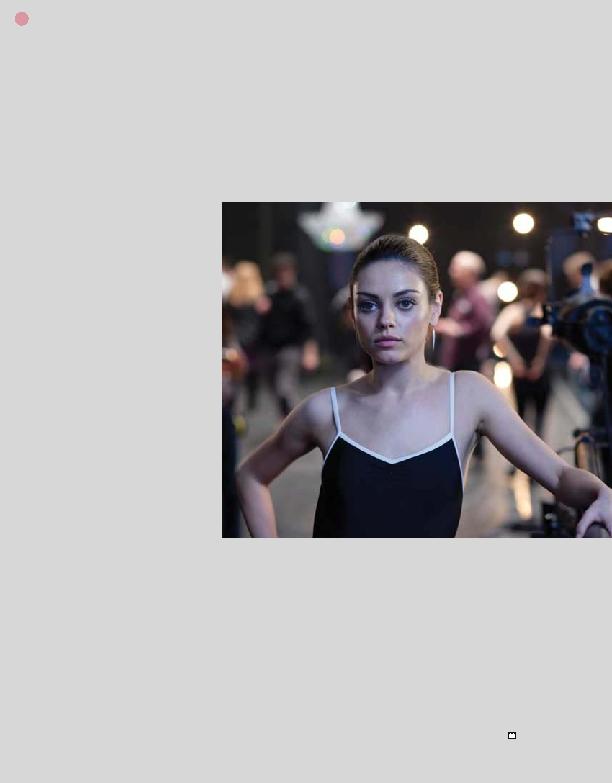
director character, he's trying to help her,
but his methods are a little bit question-
able. And Lily's trying to befriend her, but
it's clear that she has an agenda. And her
mother really cares about her, but a little
too much. I think that was important. All
the characters have that duality, where
there's a good side and a well-intentioned
side, but also the dark edge to that and
some other ulterior side," he explains.
which the writer also worked as a producer
on The Wrestler. He did much of his early
work on the script while traveling back and
forth from New York City to Providence, RI,
by train, where one of his then-girlfriend's
(now his wife) plays was being produced.
"Trains are incredibly peaceful, and there's
something about the constant forward mo-
tion that I found helpful, since you can feel
incredibly stuck staring at a computer trying
to write," Heyman says. Of course, by that
point, he and Aronofsky had done much of
the heavy lifting via outlines and discussion,
and it was simply a matter of transforming
what they had agreed upon into script form.
beginning. "I like to take wild right-hand
turns that often lead me, sometimes frustrat-
ingly, to dead ends, but I try to do that in the
outline form, because I find that it saves a lot
of time," Heinz says. For Heyman, "I would
write outlines until Darren felt good, and
then write a draft off of that outline, and
then we'd have a conversation about what
still needed work."
sense. "The key is showing an outline to
someone who doesn't really know the story,
because that will force you to really flesh
things out so it's understandable," he says.
Every time Aronofsky introduced a new idea,
Heyman would outline again -- always going
back to that stage to explore each concept, no
matter how crazy. "The way Darren works,
you have to fully execute these ideas. Even if
they don't work, you learn something."
came the backbone of the film. As Heyman
remembers it, "He said, `Why don't you
make this like a werewolf movie, but a `were-
swan' movie? Let's have a Black Swan trans-
tone for every draft that followed and intro-
duced the idea of Nina's rash -- a physical
manifestation of her mental state, as well as
a setup for the movie's supernatural climax.
insisted on starting from scratch. "Otherwise
it can start to feel piecemeal," he says. "If cer-
tain ideas find their way back in, that's fine,
but you have to avoid copying and pasting."
In that way, a number of the themes from
Heinz and McLaughlin's work on the script
amined, while new ideas were allowed to
emerge organically. One of the key themes
of the final version -- Nina's obsessive, im-
possible pursuit of artistic perfection -- actu-
ally surfaced quite late in the process.
American Ballet Theatre and reading up on
the ballet world, but his research tended to
focus on thriller-ready details, such as the
rigid codes of appearance (suggested through
scenes of bulimia and bodily violence) and
intense discipline required of performers
who began at a very young age (hence,
Nina's stunted girlishness). "I thought of this
should have come of age 10 years earlier," he
says. But when Heyman showed a draft to a
ballerina friend who'd had a harrowing ex-
perience after dancing professionally, she
told him, "You understood the intensity of
that world very well, and you definitely got
the scariness of it all, but I don't feel like
you've really shown why people do it."
tion with his retired friend, in which she'd
explained the almost transcendent feeling
that in mind, he went back through the
script and rewrote several key moments,
threading in this new, clearer idea of what
Nina's character wants. As superficially dif-
ferent as the ballet milieu might have
seemed, it was this change that ultimately
distinguished Black Swan from the equally
obsessive worlds of The Wrestler and Aronof-
sky's other movies.
stroying yourself, there's something bigger
and higher that you're striving toward, so it's
not just punishment for punishment's sake.
They're not masochists."